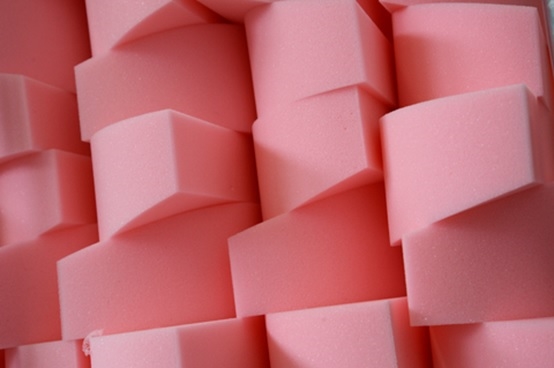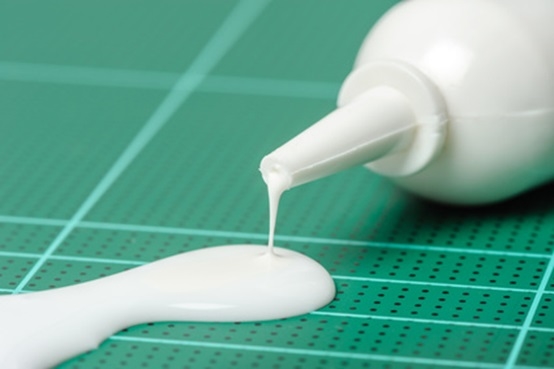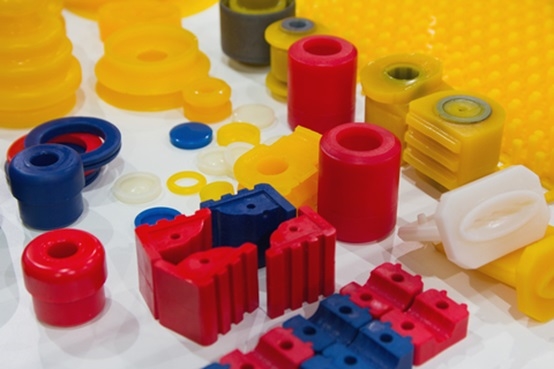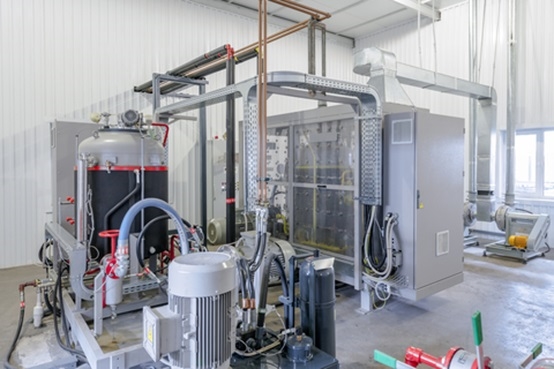- Polyurethane Material Industry Insight
Polyurethane Material Industry Insight
Polyurethane Material Industry Insight
- Introduction
Polyurethane, also known as PU, is a kind of polymer, and it is widely used in varied applications and industries. In general, since different formulation and process of polyurethane leads the material to be foam or elastomer form, the study of polyurethane process is complex and relies on the knowledge of chemistry. This article will be looking at three crucial aspects of the production process of polyurethane. The first part is the discussion about the manufacturing process of the material. It divides this study into three sections including the production of isocyanates, the creation of polyols, and ultimately the production of polyurethanes. The second significant discussion encompasses the application of PU materials. This section is broad identifying the primary uses of PU coating & adhesive, PU foam, and PU sealant & elastomer.
- Raw Materials and Formation of Polyurethane
Back in 1937, Otto Bayer and some of his colleagues were responsible for the earliest discovery of Polyurethane. They were working on other projects that focused the production of polyurea from aliphatic diisocyanate and diamine. It was while working at the laboratories of I.G Farben in Leverkusen Germany that the team discovered the formation of PU from aliphatic diisocyanate and glycol. The study of PU formation and production continued, but became commercially available only fifteen years later. Chemists and material engineers learned that the process of PU involves an exothermic reaction between a mixture of alcohol and multiple hydroxyl (-OH) group molecules with isocyanates. The molecules groups can either be diols, triols or polyols. On the other hand, the isocyanates should be multiple isocyanate groups (-NCO), such as diisocyanates or polyisocyanates.
Industries consider TDI (toluene diisocyanate or methylbenzene diisocyanate) and MDI (methylene diphenyldiisocyanate or diphenylmethanediisocyanate) as the most widely used and critical form of aromatic and polyisocyanates. Since the formation and production of MDI and TDI involves a highly poisonous chemical compound: Phosgene, the industry is concentrated and oligopolistic in nature with top manufacturers accounting for huge portion of the overall market share. Therefore, pricing and stock of isocyanates are highly dependent on the top chemical manufacturers. In addition, growing environmental concerns and volatile raw material prices are expected to challenge manufacturers of Polyurethane. MDI and TDI have witnessed price swings on account of fluctuation in their precursor markets, such as petrochemicals.
The second part in the manufacture of PU involves the production of polyols. These polyols make up at least 90 percent of the total fabrication of PU. They can either be in the form of hydroxyl-terminated polyethers or hydroxyl-terminated polyesters. A specific feature of these compounds is that their reaction with the isocyanates aims at producing PU containing particular properties. Hence, the degree of molecular cross-linking depends on the molecular structure, size, and flexibility of the chosen polyols. These aspects are also important because they influence the mechanical properties of the polymer. Some reactions with biopols, such as soya bean oil and epoxypropane, reveal that polymers can be derived from renewable sources.
Production of polyurethanes involves the production of a linear polymer, which results from the reaction of two hydroxyl groups with either TDI or MDI. A reaction between polyols containing multiple hydroxyl groups leads to the intertwining of long-chain molecules at their intermediate points. The cross linking of the particles in the immediate course of a stiffer polymer structure with enhanced mechanical features creating a rigid PU. The PU’s also does need to undergo a variety of chemical reactions to control the formation process and produce the desired PU with specific properties. Different additives serve different uses in the manufacture of PU. For instance, catalysts are the agents that speed up the reaction process between the polyols and polyisocyanate. Smoke suppressants help to reduce the rate of generating smoke when burning a PU. One of the most popular uses of PU materials is serving as blowing agents surfactants. The additive, in this case, creates a PU in the form of foam as a way to control the bubble formation. Consequently, the reaction produces cell structure foam. On the other hand, the cross-linking of molecular strands modifies the PU structure and creating greater reinforcement. Hence, the physical structures increase the functionality of PU.
- Applications of Polyurethane
3.1 Foam

Tons of polyurethane is produced as the final product especially as large blocks of foam. The manufacturer then cuts the blocks to smaller pieces. In most cases, the foams serve as cushions or for thermal insulation. The rigidity or flexibility of PU depends on the specific density levels of the PU. This aspect also influences the use of a particular PU material. For example, PU’s are suitable materials for cushioning because of the low-density levels, high flexibility as well as high resistance to fatigue. Polyurethane foam is widely utilized in interior components, and other lightweight automotive parts to foster fuel and energy savings. Another frequent use of PU is the insulation of electrical equipment. PU’s are the best suit for these machines because of their resistance to oils. Besides, it is possible to increase the density during manufacturing to make the cables tough. Patients suffering from the heart-related problems usually undergo a procedure of artificial heart valve installation. The artificial valves are suitable because PU’s have high flexibility and biostability levels. The high flexibility ensures that the valves can expand and contract freely just like the regular heart valve. One of key advantages of polyurethane is that it is possible to start the PU process at the different levels because of the low molecular weight of the pre-polymer liquid which makes it easy to handle. The pressure of the starting materials is also considerably low. Another advantage of the polymerization process is the ability to convert the initial monomers and pre-polymers materials into solid end products at the different levels of the reactions. Moreover, inherent properties of rigid and flexible foams such as structural stability allow the production of thermally insulating products. The adhesive properties also ensure that the building panels offer enough strength to hold the building together and that it lasts longer. Efficient and insulative foams are also being utilized in ‘green’ buildings and other sustainable infrastructure projects to lower energy costs in developed regions such as Europe & North America. Besides, due to PU’s high durability, resistant to abrasion, and flexible physical properties, PU is also a good material for shoe soles.
3.2 Coating and Adhesive
Coating is necessary for vehicles, walls, cables, floors, bridges, and textile among other areas. An article in the ebrary.net website records that the coating market realizes about 2 billion USD in sales. It’s rate of consumption globally reflects the high demand for finished goods that require PU coating. It also indicates that high application in industrial and architectural industries. The development of environment-friendly coatings with poly-aspartic and 2K waterborne PU technology has also opened up new avenues for further sales growth. PU contains properties that allow for durability, corrosion, and weather resistance that makes it a suitable material for coating. The main aim of a coating is to protect and shield these services from pollution or corrosion of any external substance. It also helps in maintaining items, such as cables, last longer and gives surfaces a better look. In particular, the coating of vehicles ensures that the exterior part is highly glossy to protect the car from corrosion or scratching while also improving the color retention. Japan is one of the countries that record the highest consumption for PU coating. This situation could be a result of a large number of automotive assemblies and architectural companies in the region. The same principle applies to the external parts of an aircraft. However, planes also need to have the surfaces coated from extreme temperature differences. The airplanes fly at high altitudes where temperatures can either be extremely high or low. Bridges surfaces require a coating to prevent the support beams from rusting. Coatings have good impact resistance. For instance, coatings application is essential to prevent solvent degradation. This type of coating is mainly used on abrasion and chemical resistant surfaces, or fast curing surfaces such as bowling alleys and dance floors. On the other hand, automobiles and aircrafts require water base PU coatings.

The recycling developments are essential as a way of preserving the natural resources. For example, fiberboard is a product of PU binders combined with woodchips. Furthermore, solvent-borne PU adhesives are becoming unpopular over time with more industries resolving to use waterborne PU raw materials. This shift is in accordance with VOC (volatile organic compounds) guidelines that recommend the use of waterborne PU materials that are entirely solvent-free and more environmental-friendly.
3.3 Sealant and Elastomer
Sealants are substances used to attach two surfaces by filling the space between the surfaces. Construction, consumer products, transportation, aerospace, and electronics companies are some of the primary market segments for PU sealants. The construction industry precedes the transportation and industrial markets in terms of demand. PU sealants are a vital component in the construction or manufacture of materials that require high-strength water resistant seals. The property of PU also ensures that materials recovery with ease after being bent or pulled and that the item does not lose its shape.
Another type of polyurethane is elastomers. These are rubber-like polymers with the ability to stretch to great lengths, and they return to their shape after the stretching force is withdrawn. The way elastomers operate can be equated to a spring.
Also, elastomers can resist flow when distorted by external forces. Just like other forms of PU, the versatility element allows PU elastomers to attain the optimum physical properties necessary in the application of specific task. At the same time, flexibility facilitates PU manufacturing industries to customize the elastomers for use in the different market segments. PU’s can perform a variety of functions for metals and ceramics because of the dependability of cast elastomers. When they are in rubber form, cast elastomers have high resiliency and flexibility. Furthermore, PU elastomers have diverse applications and offer a wide range of hardness and processing features.

In conclusion, nowadays polyurethane industry may be segmented by product into foams, coatings, adhesives, sealants, elastomers, and other products. The polyurethane market size was around 50 billion USD in 2015 and is projected to grow steadily due to increasing demand of lightweight and durable materials for furniture, construction, automotive, electronics & appliances, footwear & packaging has driven growth in recent years. It is essential to research PU materials with faster and less costly production process, stronger properties, and more environmentally friendly.
